
Case Study – 1
Patient: 42-year-old Female
Case scenario:
- 42 years old female, presented with a history of swelling right leg for 12 days duration, vomiting, oliguria, fever off and on.
- H/O Dog bite over right leg 20 days before.
- On examination, she was conscious, febrile, tachycardia with BP 150/90.
- Her right lower limb was swollen upto knee joint.
- There was erythymatous, dusky red patches over backside of leg.
- Her investigation
- Random Blood Sugar : 246 mgs%
- Blood Urea : 122 mgs %
- Serum Creatinine : 6.5 mgs%
- HBA1C : 9.3 %
- Total Count : 16000 cells/cumm [P84 % L12% E4%]
- HB : 6.0 gms%
Clinical diagnosis:
LONG STANDING T2DM, #necrotizing fasciitis, septicaemia, AKI On CKD, anaemia.
- She was admitted in our hospital and treated with broad spectrum antibiotics, metronidazole, insulin infusion, iv fluids.
- After stabilization she was subjected to fasciotomy with extensive debridement on second day of admission.
- Swelling over the leg leg gradually reduced in 3 post-operative day and patient made a rapid recovery.
- Culture Report : Escherichia coli grown in culture.
- Antibiotic given as per culture report.
- Patient discharged 8th day of admission.
- Her blood reports on discharged.
- Post Prandial Blood Sugar : 181 mgs%
- Blood Urea : 110 mgs%
- Serum Creatinine : 6.8 mgs%
- Haemoglobin : 5.8 gms%
- Patient treated in OPD, the wound was regularly cleaned, debrided.
- The wound got covered with red granulation tissue in 8 weeks. This patient later on could be managed on oral antidiabetics.
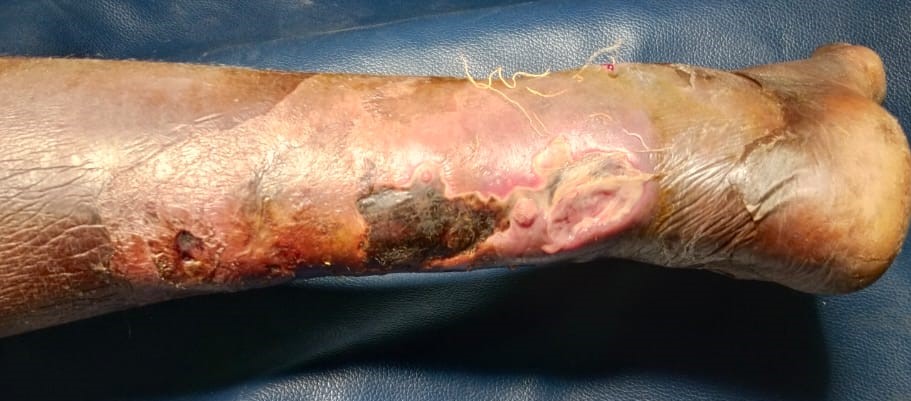
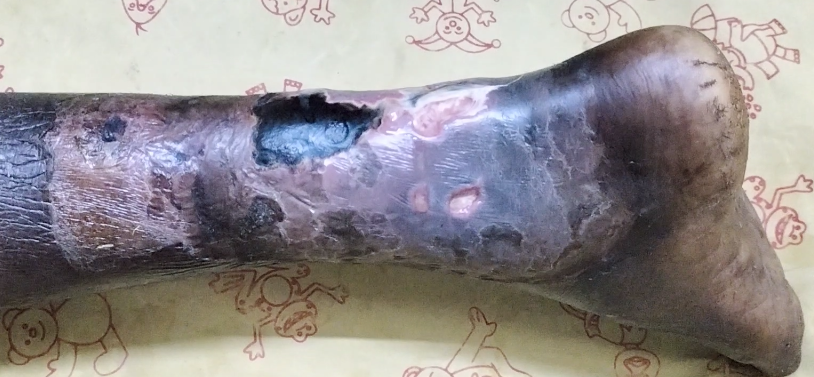
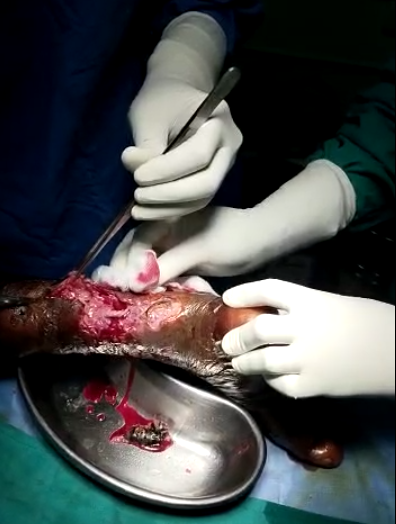
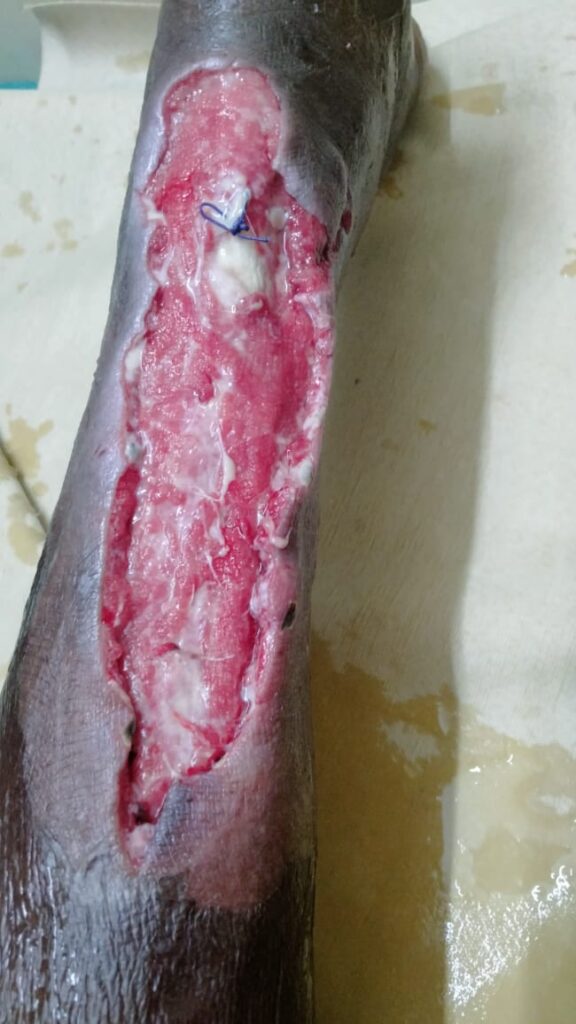
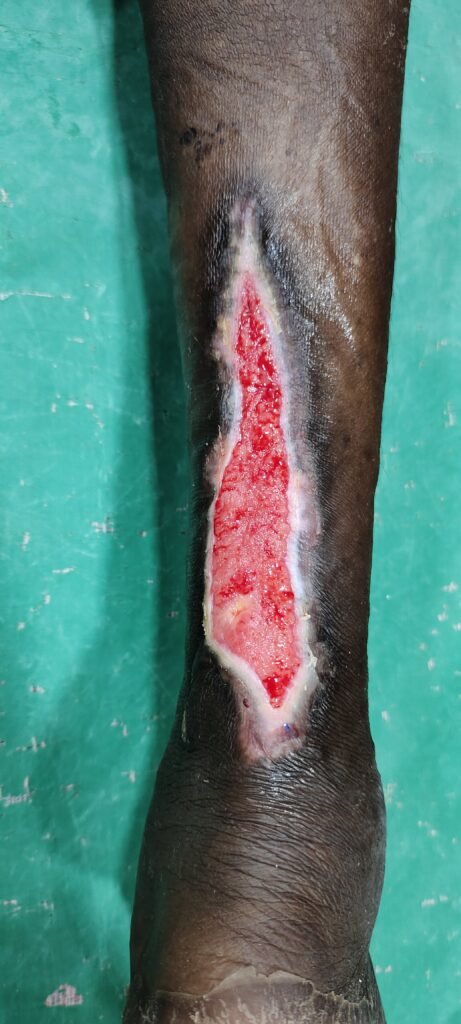
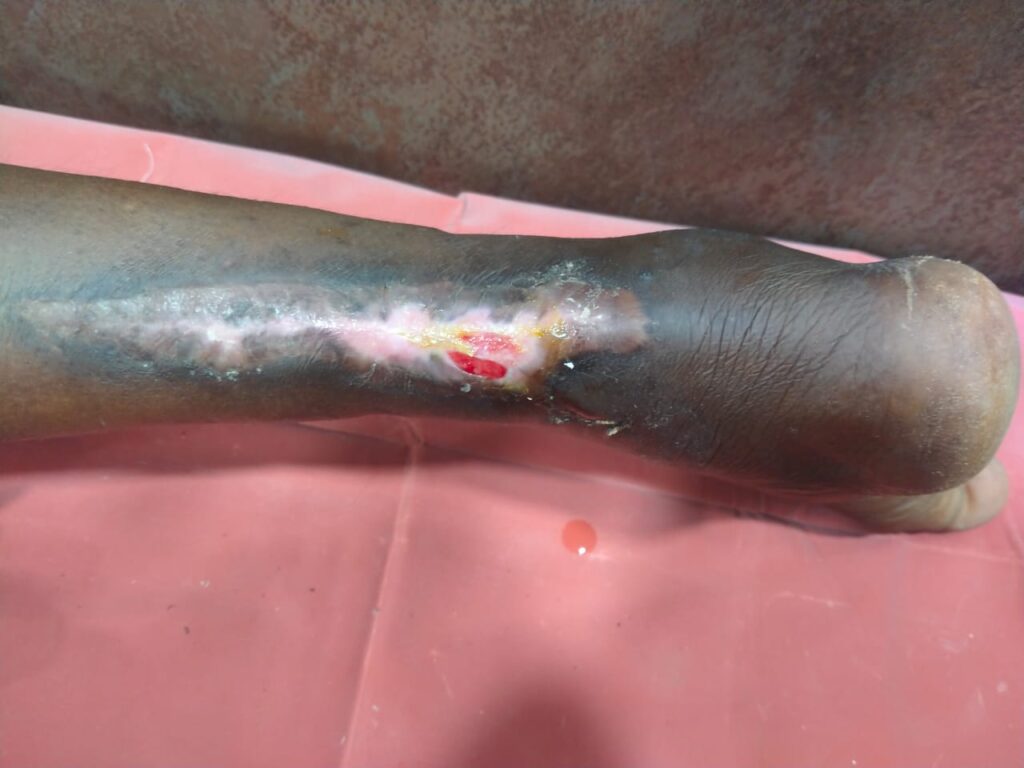
#NECROTIZING FASCITIS
- In the tissues adjoining infections, small vessels commonly develop thrombotic occlusion leading to necrosis. After control of infections or draining, normal arterioles recanalize and form granulation tissue promoting healing of the wound. However, in certain mixed infections, so common in diabetic foot, virulent strains of staphylococci, and streptococci liberate angiotoxic (necrotizing) substance.
- These angiotoxic factors like alpha-toxin of staphylococci, along with spreading factors like streptokinase and streptococcal hyaluronidase lead to rapid extension of necrosis by digestion of fibrin barriers and intracellular ground substance, this is severe, progressive soft tissues infection, which leads to necrosis of subcutaneous tissues down to the level of muscle fascia.
- Clinically, it begins with a trivial infection in the foot or hand leading to rapidly advancing necrosis with erythema, swelling, and dusky discoloration of the overlying skin with haemorrhagic blisters.
- The occlusive process in the small vessels is exaggerated more arterioles are obliterated and the original lesions get converted from trivial to ever enlarging areas of necrosis and gangrene.
- Creeping advancement of this process of infective obliterative angiopathy leads to devasting lesions within a couple of days.
- There is also evidence of systemic toxicity in the form of fever, tachycardia, and hypotension.
- Urgent fasciotomy, fascietomy and if required a major amuputation needs to be carried out of along with an aggressive medical treatment to prevent such a life threatening situation.
References:
DIABETIC FOOT:
A Clinical Atlas / Sharad Pendsey











